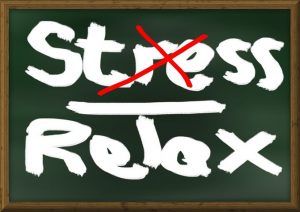 Most people who have tried to lose a significant amount of weight and maintain that loss have also experienced the insidious weight loss plateau. The weight comes off easily at first but then, after weeks of watching the numbers on the scale drop almost daily, the progress stops and doesn’t seem to want to start up again. It’s frustrating enough when a plateau hits before you’ve reached your weight loss goal, but it gets even more aggravating when your weight remains the same after days, weeks, and months of working out and eating right–just as you had been during those first few exhilarating months of losing weight.
Most people who have tried to lose a significant amount of weight and maintain that loss have also experienced the insidious weight loss plateau. The weight comes off easily at first but then, after weeks of watching the numbers on the scale drop almost daily, the progress stops and doesn’t seem to want to start up again. It’s frustrating enough when a plateau hits before you’ve reached your weight loss goal, but it gets even more aggravating when your weight remains the same after days, weeks, and months of working out and eating right–just as you had been during those first few exhilarating months of losing weight.
Many personal trainers recommend varying your workout routine, or even switching to an entirely different exercise style, and that is good advice, but it only addresses one issue that causes weight loss to stall. There is more than one reason your progress grinds to a halt, so the best strategy for getting off a plateau is to address as many causes as possible. Once you understand why you hit a plateau, you can jumpstart your weight loss and get back on track to meeting your goal.
Maintain That Muscle
One of the worst culprits that cause weight loss plateaus is the loss of muscle mass during the first successful weeks of a new diet and exercise regimen. According to the Mayo Clinic, since muscle mass burns more calories to maintain, losing even a small amount of it will slow your metabolism down. You’ll be burning fewer calories doing the same activities and exercises you were doing during your initial weight loss. That can result in a plateau or even reversal, especially if the number of calories you burn no longer exceeds the amount you take in.
A change in workout routine or exercises can help with this one, but MyFitnessPal recommends re-evaluating your caloric intake and burn after every 5 to 10-pound loss to stay ahead of a plateau. Additionally, it’s important to include strength training as part of your workout routine to give your body a chance to at least maintain muscle mass, if not build more for better weight loss results. AND, be sure to include lean protein in your diet. That will not only help you build and maintain muscle mass, but WebMD points out that protein suppresses the hunger hormone that stimulates your appetite, making it easier to stick to your weight loss diet plan.
Get More Sleep

Setting the alarm for an early workout can cut into necessary sleep time and hinder your weight loss goals.
If you’ve been getting up early to exercise, the lost sleep could be counteracting your workout. According to the University of Chicago Medical, dieters who cut back on sleep also cut the amount of fat they lose. Instead of commandeering sleep time for exercise, try to schedule your workouts for some other time of day. If morning is the only time you can work out, then go to bed earlier, so you still get a full night’s sleep. Have a hard time falling asleep if you hit the hay earlier than midnight? Prevention has some tips for sleeping better starting with going to bed at the same time every night. It may take some getting used to, but once your body is accustomed to going to bed at that earlier hour, it will be easy to drift off within a reasonable amount of time.
Other sleep-better tips include:
- not working out too close to bedtime–give yourself a 4-hour buffer between exercise and going to bed
- talking to your doctor about how your medications may be affecting your sleep
- eliminating caffeine after 2 pm
- plugging in a sound machine that emits soothing sounds such as rain falling, wind blowing, or white noise
- turn off and block out all sources of light when it’s time for bed
Also, it can be helpful to develop a bedtime routine and stick to it. Going through the same motions night after night such as laying out your clothes for the next day, brushing your teeth and washing your face, and relaxing in bed for 15 to 20 minutes before lights-out will signal your body that it’s time to wind down and prepare for sleep.
Relax Yourself Off a Plateau

A few minutes of deep breathing or meditation is relaxing. It snuffs out stress and can help get you off a weight loss plateau.
Stress is often overlooked as a reason people hit weight loss plateaus, but it is one of the worst offenders because it not only affects your ability to sleep, but it also sabotages your willpower when it comes to your diet. Prevention‘s solution is to take up meditation, citing a study published in Obesity Reviews that showed the positive effects of meditation on all three types of stress-related eating: emotional eating, binge eating, and overeating. The recommendation when stress over anything including a plateau makes you think you want or need to eat is to take 5 minutes to empty your mind, focus on relaxing one body part at a time starting with your toes and working up to your head, and just concentrating on inhaling and exhaling fully and deeply.
Stay tuned–next week we’ll talk about an effective way to bust through plateaus.


Thanks for this post, I am a big big fan of this web site would like to keep updated.